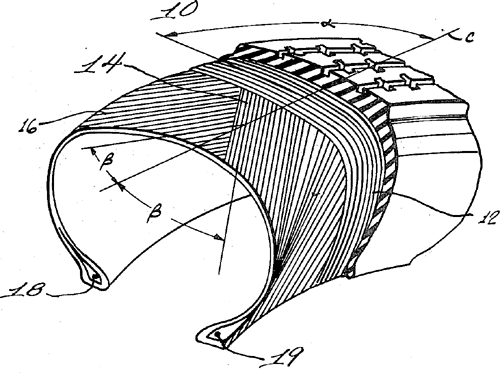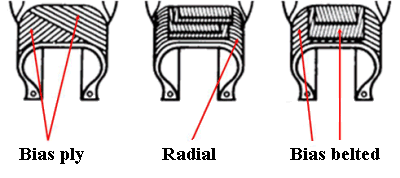Between You and The Road


| Bias
(Cross) Ply |
Having
a tire bead (area holding tire against rim),
sidewall and tread like most tires, the bias tire
has a series of tire ply cords (nylon or steel) that
crisscross diagonally (which is what "bias" means)
below the tread. This results in increased rolling
resistance, higher flexibility, and a smoother ride,
but also means less control at higher speeds. |
| Bias-Belted |
Similar
to bias tires, the bias-belted tires differ in
having stabilizer belts (generally steel or other corded material) above the top ply layer. Bias-belted tires have a smoother ride and lower rolling resistance than bias tires and are favored with classic cars as well as some trucks and SUVs. Bias-belted tires, however, can't compare with the performance and efficiency of radial tires. |
| Radial |
Lower
rolling resistance, higher mileage, longer tread
life, better steering control, and a smoother ride
at higher speeds than bias-belted tires.
Construction differs from bias-belted tires in
having cords that are laid at right angles to the
center line of the tread and are parallel to each
other, as well as stabilizer belts beneath the
tread. The downside is a rougher ride at low speeds
on rough roads as well as lower grip are low speeds. |
